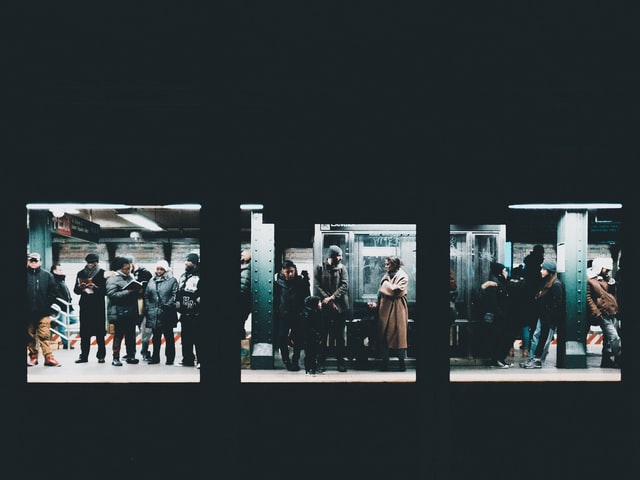News | PSR Researchers Study Fragmentation in California's Daily Travels
Stop the VideoNews

PSR Researchers Study Fragmentation in California's Daily Travels
Thursday, April 29, 2021
by Brittany Cooper
Daily life involves an assortment of tasks, with each activity or errand requiring different lengths of time traveling. These short trips that happen in day-to-day life are what PSR researcher Konstandinos Goulias, Professor of Transportation at UC Santa Barbara, and his team refer to as fragmentation, a mobility characteristic that affects activity-travel schedules. While fragmentation is a concept familiar to our lives, answering the question of how activity-fragmentation exists in our daily patterns could shed light on how new policies can benefit excluded populations and analyze gender characteristics of the private and public spheres. To close this gap in understanding activity-travel fragmentation, Professor Goulias, UC Santa Barbara doctoral student Elizabeth McBride, and Adam Davis, a UC Davis postdoctoral researcher analyzed the connection between travel fragmentation, social interaction, and the accessibility offered by the environment around people in their study, “An Analysis of Accessibility, Social Interaction, and Activity-Travel Fragmentation in California.”
Using data from the 2021 California Household Travel Survey, the researchers created a pilot analysis using respondents from the counties of San Luis Obispo (SLO) and Santa Barbara (SB) to gather personal and household characteristics, as well as one-day travel diaries in which participants tracked different aspects of their travels. The sequences of trips were documented under four categorical states: home, work, school, and other. Using sequence analysis to measure time spent travelling to a certain place and amount of time spent there, the study grouped the respondents’ daily schedules into statistically different clusters. The clusters represented: traveling days, or days spent on the road; home days, days spent at home; school days, those spent commuting to and staying at school; errand days, those spent running errands; return home, days spent coming back from a distant place; and typical workdays. The method is meant to examine places visited during a day, their correlation with spatial opportunities, and their relationship with social and demographic characteristics.
The PSR researchers found that their method produced findings with similarities to what older methods would produce, confirming the combination of the different methods as a viable process. The method also provided new important information about the scheduling of activities surrounding the traveling and returning home sequences. Employment and education were identified as key traits in determining participants’ daily activities. Poverty appeared as an important determinant, specifically, in its connection to other factors such as car ownership, car availability, and public transportation services, which led the researchers to decide that it required further study. Patterns concerning errands with different temporal rhythms were also found, as well as a pattern in which people spent most of their time at places that do not align with home, work, or school and travel. Along with these new patterns, the study also analyzed travel fragmentation based on gender, and found that among dually employed adult couples with live-at-home children, women showed more fragmented schedules than their male counterparts, which confirmed the hypothesis of women being more likely to be the one to run errands and work the second shift, therefore their results show more fragmentation overall.
As daily travel activities of people continue to fragment, the continued dependence on personal transportation has traffic patterns and environmental effects. In order to provide a public transportation alternative, current public transportation must become as flexible as people’s schedules, something the study emphasizes when suggesting Mobility as a Service (MaaS) as an alternative. By understanding the fragmented sequences of a city’s daily activities, public transportation could respond to the ongoing fragmented trend, leading to a future in which going to the store is as easy as calling a neighborhood bus that provides customized services and is integrated in a mobility system that includes public and private providers of travel services.

News Archive
- December (1)
- November (6)
- October (4)
- September (2)
- August (3)
- July (4)
- June (3)
- May (7)
- April (8)
- March (11)
- February (8)
- January (7)
- December (7)
- November (8)
- October (11)
- September (11)
- August (4)
- July (10)
- June (9)
- May (2)
- April (12)
- March (8)
- February (7)
- January (11)
- December (11)
- November (5)
- October (16)
- September (7)
- August (5)
- July (13)
- June (5)
- May (5)
- April (7)
- March (5)
- February (3)
- January (4)
- December (4)
- November (5)
- October (5)
- September (4)
- August (4)
- July (6)
- June (8)
- May (4)
- April (6)
- March (6)
- February (7)
- January (7)
- December (8)
- November (8)
- October (8)
- September (15)
- August (5)
- July (6)
- June (7)
- May (5)
- April (8)
- March (7)
- February (10)
- January (12)















